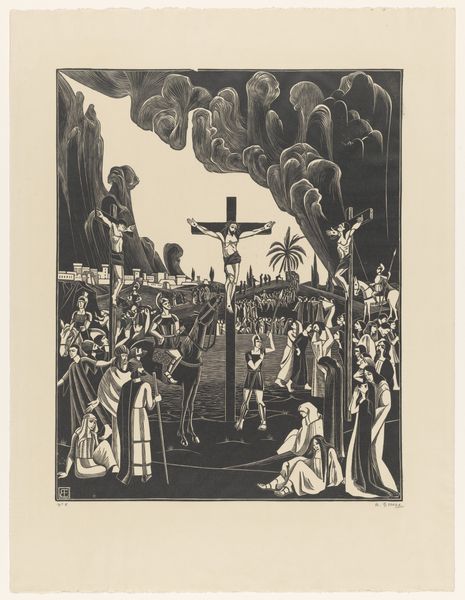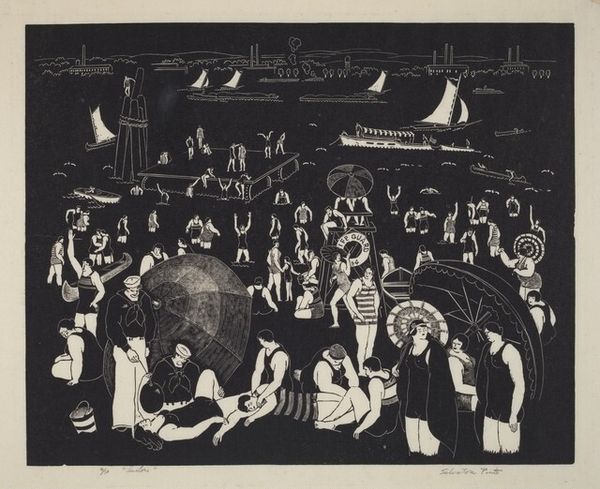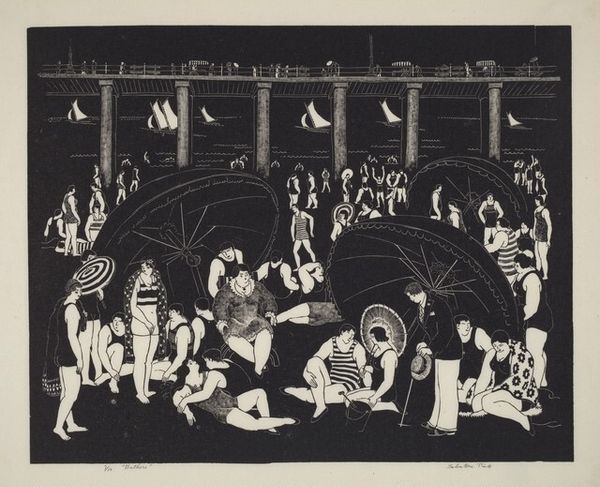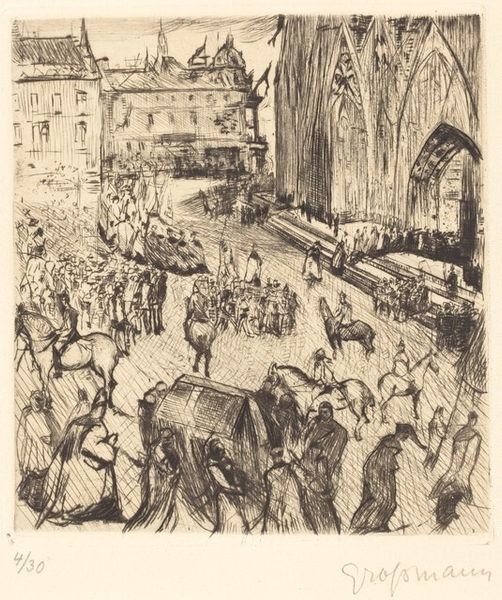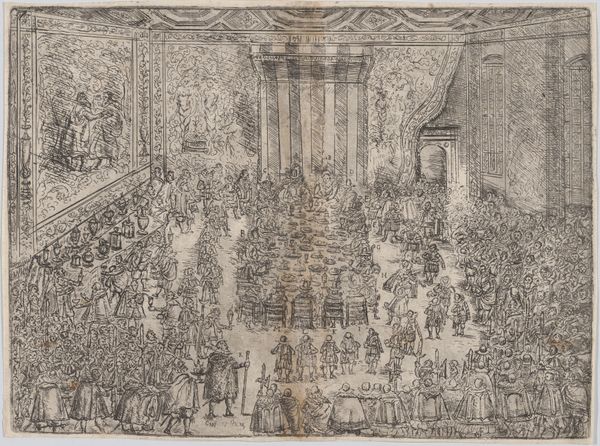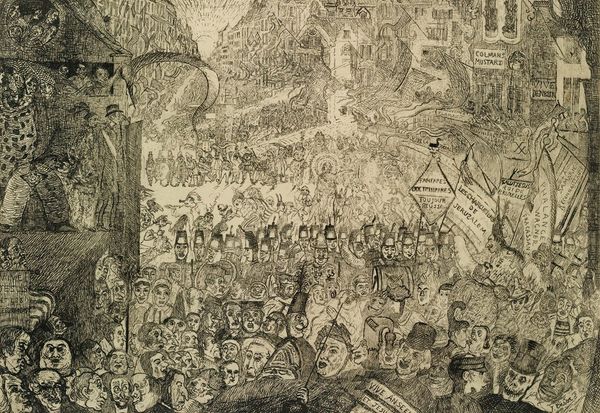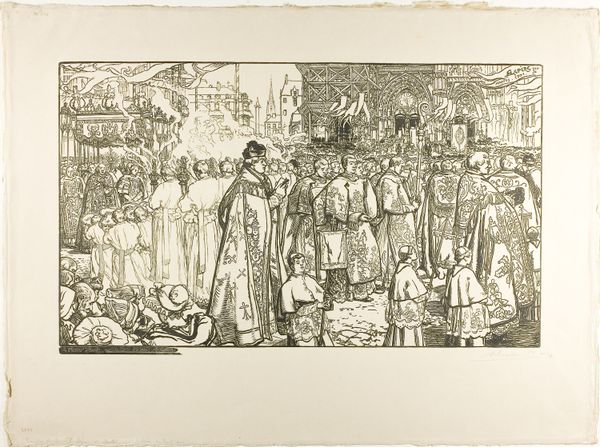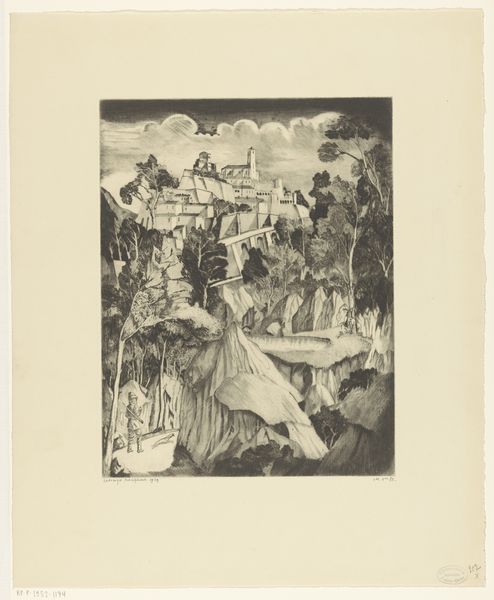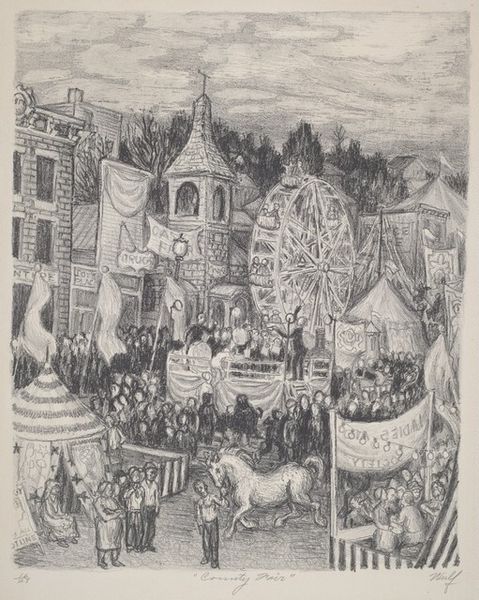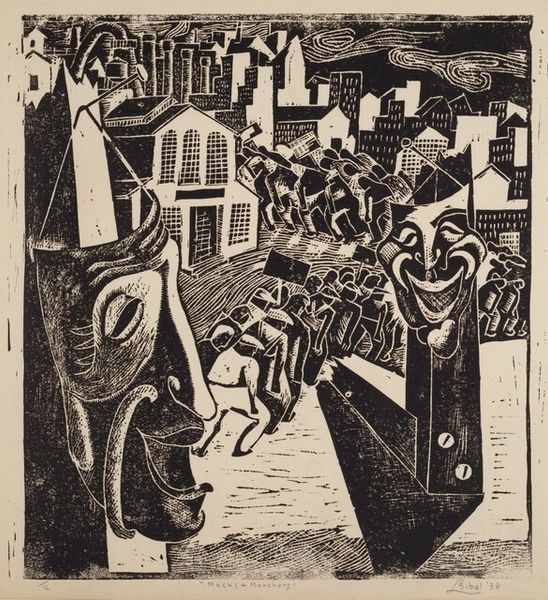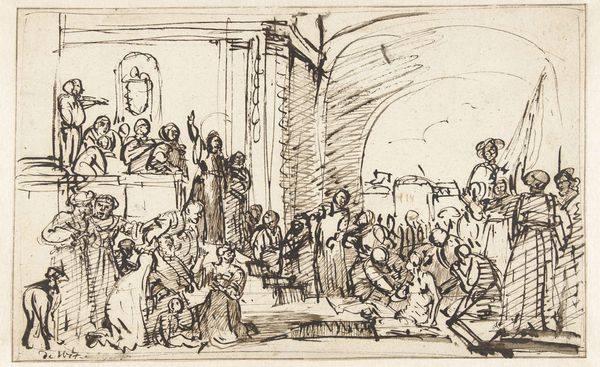
Dimensions: height 725 mm, width 576 mm
Copyright: Rijks Museum: Open Domain
Editor: Here we have "De Hel," or "Hell," a 1922 woodcut by Bernard Essers. The stark black and white imagery creates such a strong, unsettling atmosphere. I’m immediately struck by the figures in the water reaching out. What story do you think Essers is trying to tell? Curator: That's an astute observation about the atmosphere. The high contrast really heightens the drama, doesn’t it? To me, it feels like a descent – both literal, into the depths, and perhaps metaphorical, into some inner turmoil. The boat, reminiscent of Charon’s ferry in Greek mythology, is quite striking. Perhaps Essers is inspired by Dante's Inferno, but with a modern, symbolic twist. What do you make of the cityscape looming in the background? Editor: It almost feels like a twisted paradise, mocking the suffering below. The juxtaposition is… well, hellish! Curator: Exactly! Notice how the figures in the boat seem detached, almost indifferent to the chaos. That indifference, I think, speaks volumes about the human condition, about how easily we can become observers of suffering rather than active participants in alleviating it. Does it bring anything to mind for you? Editor: It makes me think of modern indifference and the news cycle… constant exposure, yet a feeling of powerlessness to change anything. What a powerful commentary for its time – and maybe even more so today. Curator: Precisely! And that’s what makes art like this so enduring. It holds a mirror to our own humanity – warts and all. Hopefully we can all pull out our tiny boats and get more involved! Editor: It’s definitely given me a lot to think about…the contrast, the composition, and the lasting implications about our roles in society. Thanks for pointing those out.
Comments
No comments
Be the first to comment and join the conversation on the ultimate creative platform.
